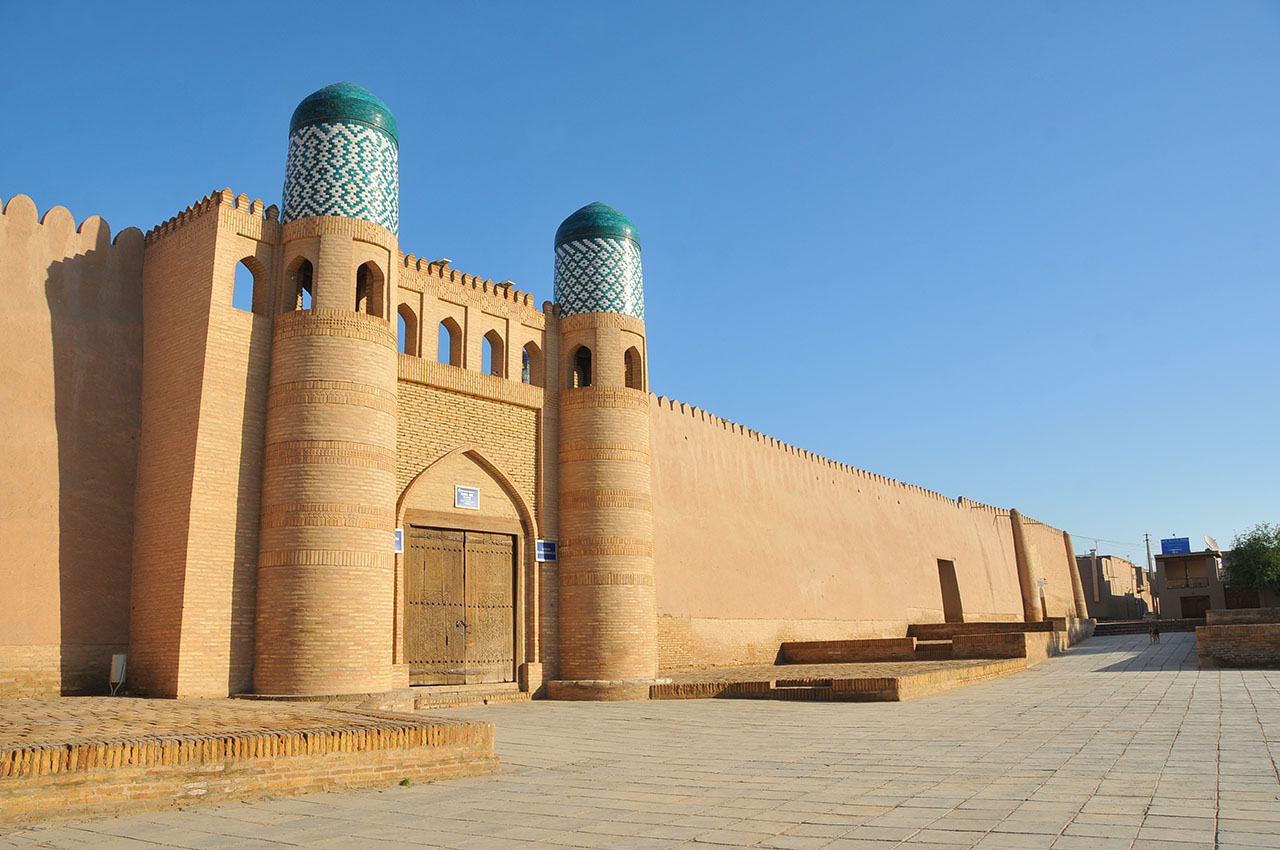Kunya-Ark Citadel(In Khiva)

The Kunya-Ark Citadel in Khiva, built in 1686 by Arang-khan, stands as a significant historical monument at the western gates of Ichan-kala. Designed as a multi - courtyard complex, it served as a residence for the khan, his family, and high - ranking officials. Despite the loss of many original structures, several 19th and early 20th - century buildings remain, including the official reception hall (kurinishkhana), a mosque, the mint, and a harem. Historically, it also housed an arsenal, powder - mill, official buildings, warehouses, a kitchen, guardhouses, a stable, and a parade area. High - cogged walls separated it from Ichan-kala's surrounding neighborhood.
The outer yard was a waiting area for audiences with the khan, while the second yard held cannons. Officials gathered in the third yard, where the kurinishkhana's main door became visible. A felt yurta (nomad tent) was set up for the khan’s use. A narrow corridor led to the harem, and a staircase provided access to the Akshikh-bobo mount. The two - layered aivan, integrated into the city wall, opened towards the city, offering a panoramic view of Khiva and its surroundings. This area was also used for military observation and was a favored resting spot for Khiva’s rulers on warm nights.
The fortress’s charm lies in its closely compacted constructions and splendid aivans. The high two - column aivan of the kurinishkhana, where receptions were held, is entirely faced with majolica. During the 18th century, the citadel suffered significant damage from an Iranian invasion, but Iltuzar-khan restored the kurinishkhana in the early 19th century. The restored structure included a throne hall, the khan’s apartments, a treasury, and a manuscript depository. The interior of the throne hall features carved plaster and a throne made of turned wood, decorated with stamped silver, crafted by the local master Mukhammad in 1816. The cold blue - white and sky - blue patterns of the majolica plates contrast with the red murals of the ceiling, showcasing the artistic freedom and picturesque arrangements by Khiva’s masters.
In the northern part of the citadel, a harem was constructed under Mukhammad Rahim-khan II in the latter half of the 19th century. The aivans’ pillars are covered with traditional carved ornaments, and instead of complete majolica facing, there are separate colored ceramic insertions. The walls are brightly colored and simply plastered.
The Khiva aivans are renowned for their elegant decoration, with artists and architects expressing their notion of beauty through skillful carving, stone carving, and decorative ceramics.
Among the preserved architectural monuments is a bathhouse built in 1657, dedicated to Anush-khan. This semi - underground, multi - chambered structure features a system of cupolas visible from the outside. The bathhouse includes a lobby, cloakroom, main bathing hall, arched passages, rest houses around a hot - water pool, and a central hall with a cold - water reservoir. The bathhouse is warmed by a system of underfloor canals through which hot air passes. This efficient technology, combined with imaginative planning and simple construction, epitomizes the architecture of Khiva’s municipal buildings.



































